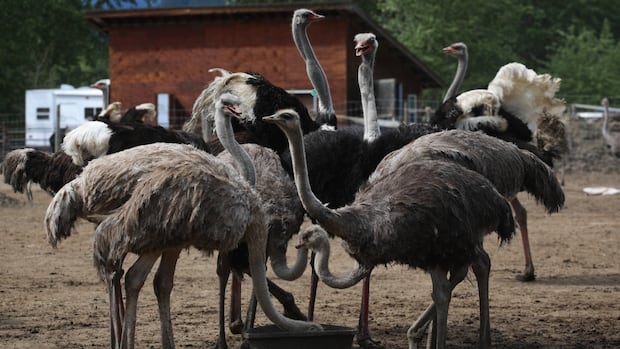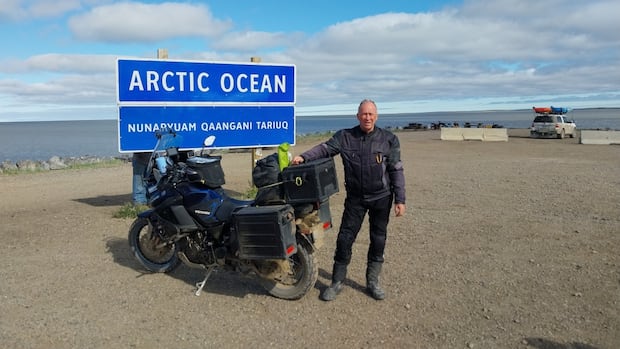Financial assistance is being increased for wildfire evacuees in Saskatchewan, the province said Saturday, as officials with the Saskatchewan Public Safety Agency also said there have been no more human starts to the fires in northern Saskatchewan that have already forced thousands from their homes.
“I think with the cooler temperatures over the last couple of days, and wind conditions changing a little bit have slowed the growth that we saw over a number of days,” said Marlo Pritchard, the agency’s president and fire commissioner, during a Saturday afternoon news conference.
Many of the large fires have not grown, as they’ve reached lakes, slowing their growth, he said.
“Things are kind of staying where they’re at,” said Pritchard, with 24 active fires now burning in the province
“Now, with this reprieve, I hope that we do get, you know, rain on these things, that we … go more on the offensive than the defensive that we have been, protecting structures.”
The fire bans across the province will remain in effect, even with light showers and rain forecast in some areas, said Pritchard.
“We will continue to monitor and assess risk, and it will be evaluated over the coming weeks or week, to determine if that should be lifted or lifted in areas,” he said.
There have been 251 wildfires in Saskatchewan so far this year, well above the five-year average of 141 for this date.
So far, 36 communities have been forced to evacuate due to wildfires. Evacuations are in effect for areas near Lower Fishing Lake — where a fire has now grown to almost 500,000 hectares in size — as well as Missinipe, La Ronge, west of Denare Beach, Pelican Narrows, Creighton and Weyakwin.
A voluntary evacuation notice has also been issued for the Candle Lake area.
The province has declared a state of emergency, which remains in effect until at least June 29.
Financial aid to evacuees
In a Saskatchewan Public Safety Agency news release earlier Saturday, the province said it is raising the daily amount provided to the head of each household to $40 per day, from $20.
Additional members of a household will now get $20 per day, up from $10, the agency said, to a new daily maximum for evacuees of $200 per day.
But Linda Cowan said the financial assistance program has been frustrating and confusing to access.
Cowan, who evacuated from Air Ronge on June 2, says she’s spent nearly $1,000 out of pocket on groceries and gas.
“My head is just exploding,” said Cowan, whose contact information was provided to CBC by the Saskatchewan NDP.
“I can’t even wrap my mind around how disorganized and dysfunctional this is compared to the 2015 evacuations,” she said.
“The minute we registered with the Red Cross in Prince Albert [for the 2015 wildfires], they gave us a gas voucher for the gas we were spending evacuating … and they gave us food vouchers every five days.”
After evacuating Air Ronge, Cowan registered with the public safety agency. She spent several days with relatives in Osler, about 30 kilometres north of Saskatoon, after she couldn’t find a hotel room. She’s now in Regina.
Because only a single day’s worth of vouchers are distributed each day, and electronic transfers are not available, Cowan said in order to take full advantage of food vouchers being distributed by the safety agency, she would have had to drive to the Safeway in Saskatoon to pick up a new one every day.
One of Cowan’s daughters was able to find two hotel rooms in Regina for her family. Those are being provided by the SPSA, along with three meals a day for everyone.
“I feel that everybody else that isn’t in a hotel is being snuffed, and I don’t understand it,” Cowan said.
‘Get something out the door’: NDP
At a press conference in Saskatoon on Saturday, before the government announced it would be increasing financial assistance, Saskatchewan NDP Leader Carla Beck said that the Saskatchewan Party government needed to follow the lead of Alberta and Manitoba and offer more money to evacuees, including e-transfers.
“This is not reinventing the wheel. Get something out the door,” Beck said. “You have some people saying staying in hotels with limited access to food. You have some people staying with friends and family who are out of pocket for expenses like gas.”
Beck was joined at the conference by Jordan McPhail, the Saskatchewan NDP MLA for Cumberland, which includes La Ronge and Air Ronge.
“When we look at the emergency financial aid, it is the way that we can support all evacuees, no matter where they’ve been displaced to,” said McPhail, who noted that most of his constituents are now living outside of his riding due to evacuations.
“Some are living with family and friends in areas that are not close to evacuation centres. And so they need to be able to get the resources in the little communities that they’re in.”
Saskatchewan Public Safety Agency officials held a news conference in Prince Albert on Saturday, June 7, to give an update on the wildfire situation in the province.
Beck also noted that some residents, particularly in the eastern Saskatchewan community of Creighton, who are comparing their services to what nearby Manitobans in Flin Flon are being offered.
“Some of their frustrations about being able to pay, or concerns about being able to afford gas or groceries are very top of mind for them,” she said. “And they talked to their neighbours who are receiving direct financial support right now from the government of Manitoba.”
Currently, Manitoba is providing $34 per day to each evacuee age 13 and up, and $27 for each child 12 and under. The money is being delivered via e-transfer or prepaid cards.
Alberta is offering bulk payments of $1,250 per adult and $500 per child for families who have been under mandatory evacuation for more than seven days. That too is being delivered through e-transfers.
The SPSA’s Pritchard said the organization would consider electronic payments on a case-by-case basis, but was still committed to its current approach.
“We’re doing our utmost best to deal with those individuals that are having difficulty, whether it’s with cash cards or getting those supports, but we just need to know where they are and how we can help them,” he said, directing people to call the agency’s public assistance line.
An advisory sent by the public safety agency on Saturday morning indicated Premier Scott Moe would also speak at the conference, but he was not part of the livestreamed conference.
Up-to-date info on active fires, smoke and related topics is available at these sources:





